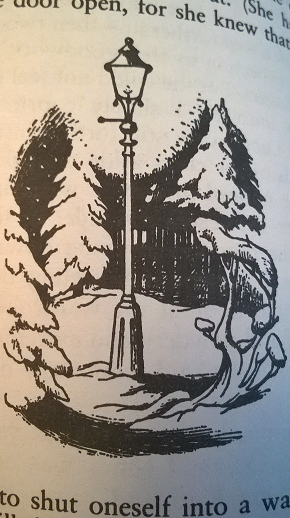Currently, I am in two minds about lesson planning. Part of me enjoys the creativity of coming up with ideas that will (hopefully) engage and inspire the learners, while the other part finds it very challenging to figure out how these ideas will work in practice. Of course, I realise that this will become easier in time, and also when I am planning for a class of real children, rather than hypothetically which has previously been the case.
With that in mind, I attempted to complete the Language TDT while thinking about the primary 5 class that I will be working with on placement. Our task was to create a lesson plan, based on a children’s book, which would meet the following outcome:
I can:
- discuss structure, characterisation and/or setting
- recognise the relevance of the writer’s theme and how this relates to my own and others’ experiences
- discuss the writer’s style and other features appropriate to genre.
ENG 2-19a
The novel that I chose for this lesson plan is the wonderful: The Lion, The Witch and The Wardrobe by C.S. Lewis. I decided to plan an introductory lesson, while focusing on just one aspect of the learning outcome – setting.
Within the first chapter of the book, the character of Lucy stumbles into the magical land of Narnia. C.S. Lewis describes her journey through the wardrobe and into another world. My lesson plan involves reading this section and noticing the description given. The children must then use the description to draw their own interpretation of what Narnia may look like. They would then write their own brief description.
As with my previous attempts at planning, I found the Plenary section to be difficult. When I go into my school placement I will observe how the class teacher finishes her lessons and will try to incorporate some of her methods.
I am looking forward to planning lessons that will be implemented as I feel that putting it into practice will allow me to further grasp how timings and assessment methods work.



I am a BA3 student in Education. I love your idea, especially with the door. It is difficult to plan properly when you do not have the focus of a proper class. From my short time on placement I think it is useful to write out the questions you will ask. Blooms taxonomy is useful for this. For the plenary I would get some of the pupils to read out part of their description and get other pupils to give feedback on one positive area and one area to develop. This will improve their critical thinking skills. #uwsba13two
Thank you so much for your comments and advice. I will certainly be working on my questioning skills and I agree that writing the questions onto my planning will help me to focus and support the children’s learning. I also like your idea for the plenary and will be attempting to incorporate peer assessment in many of my lessons.
Thanks again!
Hi Michelle,
I completely agree with Karen. Planning the questions you are going to ask will help you to ensure that they make the children think. Thinking of questions on the spot during a lesson that challenge children to think is a skill that even after 24 years teaching I’d struggle to do. Coincidentally I was discussing this very thing with the MA2s today and advising them to make sure that planning at least one question per lesson that will stimulate higher order thinking becomes part of their lesson planning routine. Karen’s suggestion about using Blooms’ Taxonomy is also a good one.
For plenaries, if you do an internet search for ’50 ideas for maths plenaries’ and look for the one from http://www.essex.gov.uk this document has 50 ideas for plenaries for a variety of subjects not just maths.
I’m with you though in terms of how you feel about lesson planning. It is exciting thinking of interesting ways to motivate and engage the children in their learning but until you actually do the lesson you don’t know how it’s going to go. That is what reflection and evaluation are for though. As you do more, you start to know what works and what doesn’t and then when you get a new class you have to start all over again but that’s what keeps this job interesting and challenging!
Happy lesson planning!
Tara
Thanks for your feedback and the resource! I’ll definitely be taking a look and pinching some ideas for placement! I completely agree with you that when I start putting my plans into practice is when I’ll find out what works. I love that working with children is never completely predictable and never the same two days in a row!
I really liked the fact you were happy to share this, and allow people to comment. I agree with the comments above and was pleased to see some other interesting responses.
There are a couple of points you might want to look at with the lesson plan. Firstly I would like you to think about your actual teaching in this lesson and the key points which take the children’s understanding forward. These critical points can be marked as TP (Teaching Points) on the plan so you can focus on where your attention should really focus. The other point relates to the LI – which mentions learning to sketch. I might suggest the main learning is around language, specifically description of setting – the sketching is the application of this, so I may leave this off the LI, but have it as a final SC. I would be keen to hear your thoughts.
Thanks for your comments. My LIs and SCs are an area that I have been working on throughout placement. I have also began to include more detail into the teaching part of my lesson plans. In future I will take your advice and attempt to make my key teaching points clear.